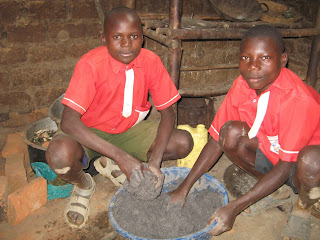
AIDS has devastated Kiwangala and its surrounding parishes. In some families an entire generation has been wiped out. The elderly are traditionally cared for by their families if they become too frail. However, in many families only the grandparents and grandchildren are still alive. However, they are unable to care for themselves or their homes. Children’s Sure House has reached out with donations of food and household items like sugar and soap to individuals within the surrounding villages. They have even built new houses for families whose homes have crumbled from neglect. Now CSH plans to alleviate the long term suffering of the population by introducing programs that promote self-empowerment.

CSH’s Older Person’s Program will work together with its Home Sustainability Program to assist the older persons so that they continue to be productive in their homes and community.
This collaboration will develop the following activities to aid the elderly:
1. Provision of psychosocial counseling services.
2. Free education for the family’s grandchildren from Children’s Sure House and promotion of the Ugandan government’s Universal Primary Education policy.
3. HIV/AIDS sensitization through outreach.
4. Income generating activities through small-scale industries and
the use of locally available materials.
5. Persuasion of elderly property owners to lease out dormant land.
In addition, Makerere University’s Faculty of Social Sciences has partnered with Children’s Sure House to conduct field work on the livelihood of vulnerable members of the elderly population in the Kiwangala area.
This is a typical home in Kiwangala village. However, this woman cannot maintain the upkeep on the structure. The mud walls are caving in and rain leaks through the grass roof that has gone unthatched.
These are the participants of the CSH Older Person's program. They are caregivers to their orphaned grandchildren who are pictured below.





 For most of his life, this boy lived with his grandmother in the house in the background. Recently, CSH was successful in mobilizing the community to build the family a more secure home.
For most of his life, this boy lived with his grandmother in the house in the background. Recently, CSH was successful in mobilizing the community to build the family a more secure home.





























